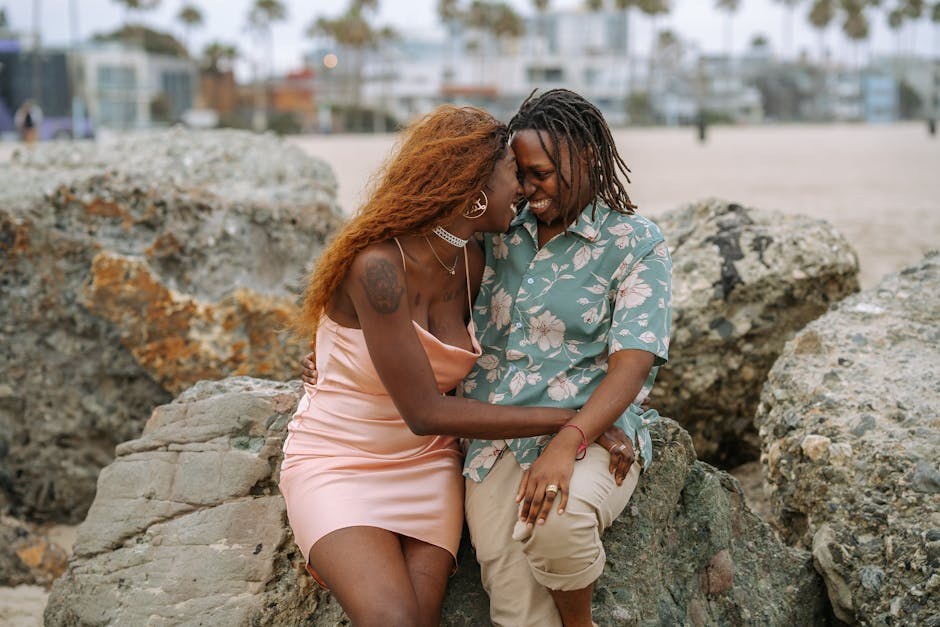Your earliest romance leaves a bright stamp on the heart – part wonder, part ache. When it ends, the pain can feel larger than life, as if every song, corridor, and quiet hour echoes with their name. The goal here isn’t to pretend the past never happened; it’s to walk forward with steadier steps while keeping one warm memory to hold in your pocket. You can honor what your first love meant to you and still regain your peace.
Why early romances rarely become forever
People change fast in the seasons of firsts. Values stretch and bend, plans evolve, and identities shift from week to week. What felt effortless at the beginning can get crowded by new realities – different schedules, diverging goals, or a mismatch in communication styles. None of that cancels the spark you felt; it simply means you and your partner grew in directions that no longer fit well.
It’s also common to place impossible expectations on a first love. Without a point of comparison, you might assume a great beginning guarantees a great ending. When the relationship meets ordinary friction, it can feel like a betrayal rather than a normal test. Recognizing that early relationships are laboratories – places where you learn how you connect, manage conflict, and set boundaries – eases the sting. A relationship can be meaningful and still not be meant to last.

Most crucially, the end of a first love is not evidence that you failed. It’s a signpost of growth. You learned what tenderness feels like, what jealousy feels like, what honesty requires, and what your limits are. Those are hard-won lessons that will travel with you.
What “getting over” really means
Getting over a first love doesn’t mean deleting the story or hardening your heart. It means stepping out of the looping highlight reel and living in the present again. You’re separating a person from the narrative you built around them – a narrative that may have amplified the good and minimized the hard parts. You can keep a single clear photo on the mental mantel and pack up the rest of the album.
This shift is subtle but powerful. Instead of trying to feel nothing, you aim to feel everything in its actual size. The sadness can be acknowledged without becoming the weather forecast for every day. On the other side of that choice is a quieter mind and more room for your own life to unfold.

Practical ways to move through the ache
-
Keep the memory, not the loop
Erasing the past tends to make it shout louder. Rather than wrestling your brain into forgetting, choose one bright moment to keep – the way they laughed when you tripped over a joke, the first time you met their family, the afternoon the rain started and you kept walking anyway. Let that single memory symbolize the sweetness of your first love, then draw a gentle curtain over the rest.
When your thoughts start replaying the same scenes, label it: “I’m watching the loop.” This small act names the habit and frees you to return your attention to the present. Curiosity helps: what else is happening in your life right now that deserves a little light?
-
Accept the ending as real
After a breakup, it’s easy to bargain with reality – to invent scenarios where one text fixes everything or where the timing magically resets. Acceptance is not agreement; it’s simply acknowledging what is. Tell yourself the truth with compassion: this chapter ended. The sooner you recognize it, the sooner your nervous system can stop bracing for an impossible reunion with your first love.

If you feel waves of anger or bargaining anyway, that’s normal. Picture emotions as weather systems: they pass more quickly when you don’t chase them across the map.
-
Lean on your circle
Isolation inflates pain. Friends and family reduce it to human size. Let trusted people know where you’re at – not for a dramatic story, but for steady company. Ask a friend to join you for a walk, a movie, or a grocery run. You’re reminding your body that safety exists in more places than one, and that your life is full of connections beyond your first love.
When you talk, share feelings rather than scripts. “I’m missing the routine we had” invites comfort and perspective; retelling the breakup minute by minute can re-open the wound. Aim for expression, not excavation.
-
Structure your days
Grief wants to spread into every open space. Give it containers. Map your mornings, middays, and evenings with a few non-negotiables: movement, nourishment, rest. Keep it simple at first – a short walk, a basic meal, a consistent bedtime. The ritual becomes a handrail when thoughts about your first love crowd in.
Build in small, absorbing activities that pull your attention outward: reading a chapter, learning chords on a guitar, tending plants, trying a new recipe. These are not distractions you use to outrun feelings; they’re anchors that keep you from drifting.
-
Do not reopen the relationship
Reaching out when the loneliness spikes can feel irresistible. But repeated check-ins create a cycle of hope and crash that keeps the wound fresh. If reconnection were right, clarity – not confusion – would accompany it. Protect your healing by resisting late-night messages and carefully crafted “just checking on you” notes to your first love.
If you need words for the urge, try this: of course I want relief, and the fastest path isn’t the best one. Relief that costs your peace tomorrow is too expensive today.
-
Turn the story into lessons
Ask questions that convert experience into wisdom. How did you communicate when you were hurt? Which moments brought out your generosity? Which boundaries felt blurry? Translate the answers into simple principles you can carry: “I speak up when plans change,” “I rest before serious talks,” “I need reciprocity.” The point isn’t to dissect your first love endlessly – it’s to distill insight you can apply later.
Write a short list and keep it somewhere you’ll actually see it. Lessons that live on a page tend to show up in real life.
-
See the whole picture, flaws included
Memory is a talented editor; it highlights the beautiful scenes and trims the bloopers. To balance the frame, intentionally recall the clumsy, tense, or incompatible moments too. Maybe weekend plans were a constant battle, or you felt small during certain jokes, or your priorities didn’t line up. Not to tarnish your first love, but to remember it accurately. Clarity softens longing because it reduces fantasy.
When you remember the good, let the good be specific. When you remember the hard, let the hard be specific. Specificity is honest – and honesty is calming.
-
Maintain clean boundaries
Healing needs clear edges. Mute or remove the feeds that pull you back into comparison or curiosity; seeing updates keeps the attachment activated. Choose different routes, playlists, or cafés for a while so your body stops expecting a run-in with your first love on every corner. You’re not being dramatic – you’re creating space where calm can grow.
If staying friends is ever possible, it won’t be immediately. Friendship requires new roles, and those roles only become believable after a period of no contact. Treat distance as a gift you give both of you.
-
Redefine love with a fuller understanding
One gift of a first romance is perspective. You know now that chemistry is real, that tenderness matters, and that love alone doesn’t fix mismatches. Let that understanding widen your definition. Love includes patience, accountability, curiosity, and room for personal growth. This broader view keeps you from idealizing your first love as the sole template for what’s possible.
As you try again someday, you’ll bring more self-knowledge and steadier expectations. That’s not cynicism – it’s wisdom that keeps you generous without abandoning yourself.
-
Trust time and your resilience
There’s an old truth: feelings move when you do. Keep moving gently. You’ll notice markers along the way – a day you forget to check your phone, a song you listen to without bracing, an afternoon when the air feels light. These signs don’t mean you’ve betrayed your first love; they mean your heart is doing what hearts are designed to do.
If a wave of sorrow hits months later, it doesn’t erase your progress. Healing isn’t linear – it’s more like a tide. Let the wave rise and fall while you hold your routines, your people, and yourself.
How to honor the past while stepping into the present
Keep one bright snapshot, and let the rest of the album close. Accept that this chapter is complete, gather with the people who love you, and give your days a steady shape. Resist reopening what ended. Extract the lessons. Remember the whole story, not just the glow. Guard your boundaries. Expand your definition of love. Trust the slow work of time.
Your first love introduced you to new parts of yourself – courage, vulnerability, delight. It also introduced you to the limits of compatibility and the necessity of self-respect. Carry the parts that helped you grow. Set down what keeps you stuck. With each small, ordinary day, you’ll feel more like yourself again, and the memory you keep will be gentler – a reminder that you are capable of caring deeply and of beginning again.
When you reach that quieter place, you aren’t erasing anyone. You’re acknowledging the truth: a heart can hold gratitude and release at once. That’s the quiet victory on the other side of a first love – not forgetting, but living fully, here and now.
And if you need one sentence to lean on as you go: you can be thankful for what was and free for what’s next. That’s how you move forward without losing the good that brought you this far.